Whether you’re new to co-teaching or looking to enhance your collaborative practice, understanding why co-teaching matters is the first step toward creating inclusive classrooms where every student can succeed. Let’s explore how this powerful approach is changing education for the better – and how you can be part of this transformative movement.
Co-teaching brings together the expertise of multiple educators to support diverse learners
What Is Co-Teaching? Understanding the Foundation
Co-teaching is an instructional approach where two or more educators share responsibility for planning, delivering, and assessing curriculum for a single group of students. Most commonly, this involves pairing a general education teacher with a special education teacher to jointly serve students with and without disabilities in an inclusive classroom environment.
At its core, co-teaching is built on the belief that all students deserve access to high-quality general education curriculum with appropriate supports. Rather than pulling students with special needs out of the classroom for separate instruction, co-teaching brings specialized services directly into the general education setting.
The Six Co-Teaching Models
One Teach, One Observe
One teacher leads instruction while the other gathers data on student performance, behavior, or engagement. This model allows for targeted observation and assessment while maintaining instructional flow.
One Teach, One Assist
One teacher leads instruction while the other circulates, providing individual support to students who need additional help. This approach maintains whole-class instruction while offering personalized assistance.
Parallel Teaching
The class is divided into two groups, with each teacher instructing one group on the same content. This reduces the student-teacher ratio and allows for more interaction and participation.
Station Teaching
Students rotate through different learning stations, with teachers facilitating specific stations. This model allows for differentiated instruction and small-group learning experiences.
Alternative Teaching
One teacher works with a small group of students who need specialized attention while the other teaches the larger group. This enables targeted intervention without removing students from the classroom.
Team Teaching
Both teachers share instruction, seamlessly alternating roles throughout the lesson. This collaborative approach models dynamic learning and showcases different teaching styles and perspectives.
Effective co-teaching requires more than just assigning two teachers to the same classroom. It demands intentional planning, clear communication, and specialized teacher skills that foster true collaboration. When implemented thoughtfully, co-teaching creates learning environments where all students can access the curriculum and reach their full potential.
According to research by Barron and Friend (2024), the most successful co-teaching partnerships move beyond the basic “one teach, one assist” model to embrace a variety of approaches based on student needs and learning objectives.
Why Co-Teaching Matters: Transforming Learning for All Students
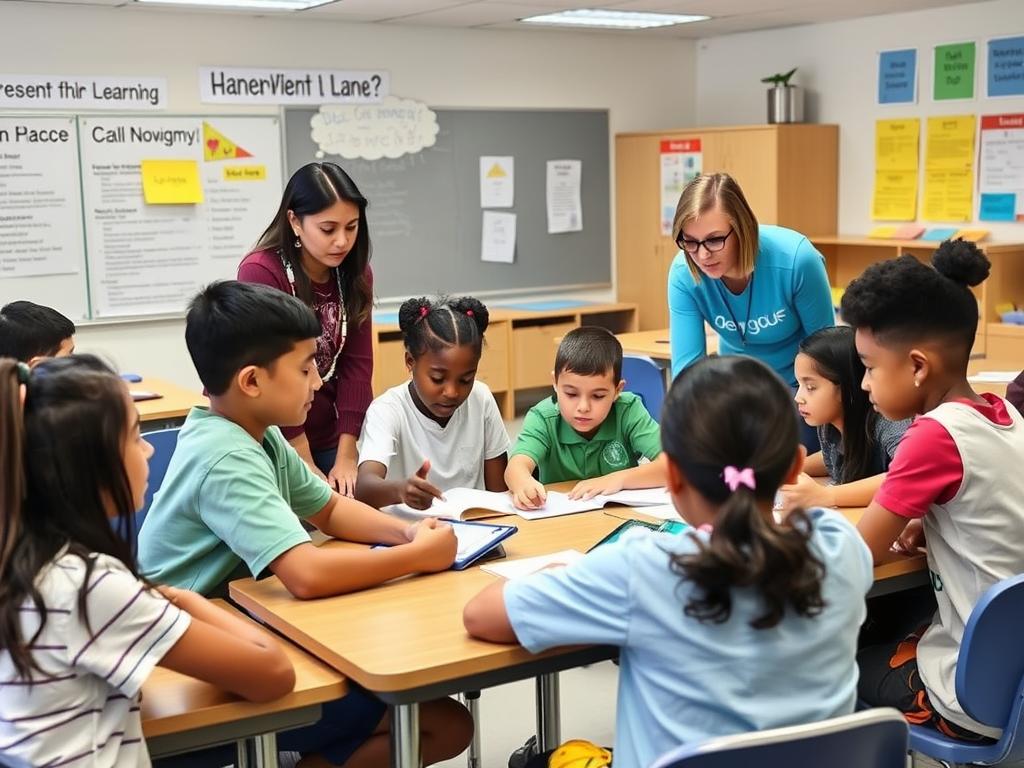
Co-teaching matters profoundly for student outcomes, creating learning environments where diverse needs are met through collaborative expertise. When general and special education teachers combine their specialized teacher skills, the benefits extend to all learners in the classroom – not just those with identified needs.
Benefits for Students with Disabilities
- Access to grade-level curriculum with appropriate accommodations and modifications
- Reduced stigma associated with pull-out services
- Increased opportunities for social interaction with peers
- Exposure to high expectations and rigorous academic content
- Seamless support without disrupting the learning process
Benefits for General Education Students
- Lower student-teacher ratio and increased individual attention
- Exposure to diverse teaching styles and approaches
- Access to specialized instructional strategies that benefit all learners
- Development of empathy, collaboration, and appreciation for differences
- Enhanced learning through varied instructional techniques
Research consistently shows that well-implemented co-teaching leads to improved academic outcomes for all students. A study by McKenna et al. (2023) found that classrooms using co-teaching models showed significant gains in student engagement and achievement when teachers received proper training and support.
Beyond academics, co-teaching creates inclusive communities where diversity is valued and all students develop a sense of belonging. This social-emotional foundation is crucial for learning and development, as students who feel connected and supported are more likely to take academic risks and persist through challenges.
Enhance Your Co-Teaching Practice
Looking to develop the teacher skills needed for effective co-teaching? Our specialized professional development courses provide practical strategies for collaborative instruction.
Why Co-Teaching Matters: Professional Growth for Educators
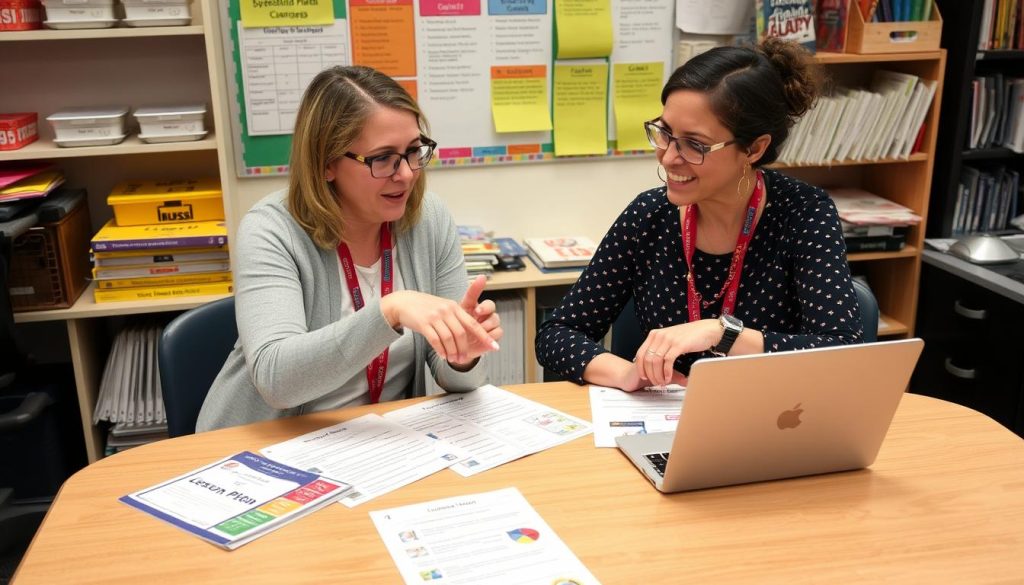
Co-teaching matters not only for students but also for the professional growth of educators. When teachers collaborate effectively, they develop enhanced teacher skills that benefit their entire practice. This professional synergy creates opportunities for continuous learning, reflection, and improvement.
Professional Benefits for Educators
Expanded Instructional Repertoire
Working alongside a colleague with different expertise expands your teaching toolkit. General education teachers gain specialized intervention strategies, while special education teachers deepen their content knowledge. This cross-pollination of teacher skills creates more versatile educators.
Real-Time Professional Development
Co-teaching provides daily opportunities to observe, learn from, and receive feedback from a colleague. This job-embedded professional learning is immediately applicable and contextually relevant.
Shared Responsibility
The collaborative nature of co-teaching distributes the workload of planning, instruction, and assessment. This shared responsibility can reduce teacher burnout while improving instructional quality through combined expertise.
Enhanced Reflection
Having a teaching partner provides a valuable sounding board for reflecting on lessons, student progress, and instructional decisions. This collaborative reflection accelerates professional growth and refinement of teacher skills.
According to Jortveit & Kovač (2021), successful co-teaching partnerships develop both “cognitive contract” (shared educational beliefs) and “emotional consonance” (trust and honest communication). These elements create a foundation for professional growth that extends beyond the co-taught classroom.
“When teachers invest time in building trust, planning together, and sharing responsibilities, co-teaching becomes a powerful tool to meet all students’ needs while simultaneously developing advanced teacher skills.”
The collaborative nature of co-teaching also creates natural opportunities for teachers to develop leadership skills, mentor colleagues, and contribute to school-wide improvement efforts. As teachers refine their collaborative practice, they often become resources for other educators seeking to implement inclusive approaches.

Why Co-Teaching Matters: Implementing Effective Partnerships
Understanding why co-teaching matters is just the beginning – implementing it effectively requires intentional planning, administrative support, and ongoing commitment. The difference between struggling and thriving co-teaching partnerships often comes down to several key factors.
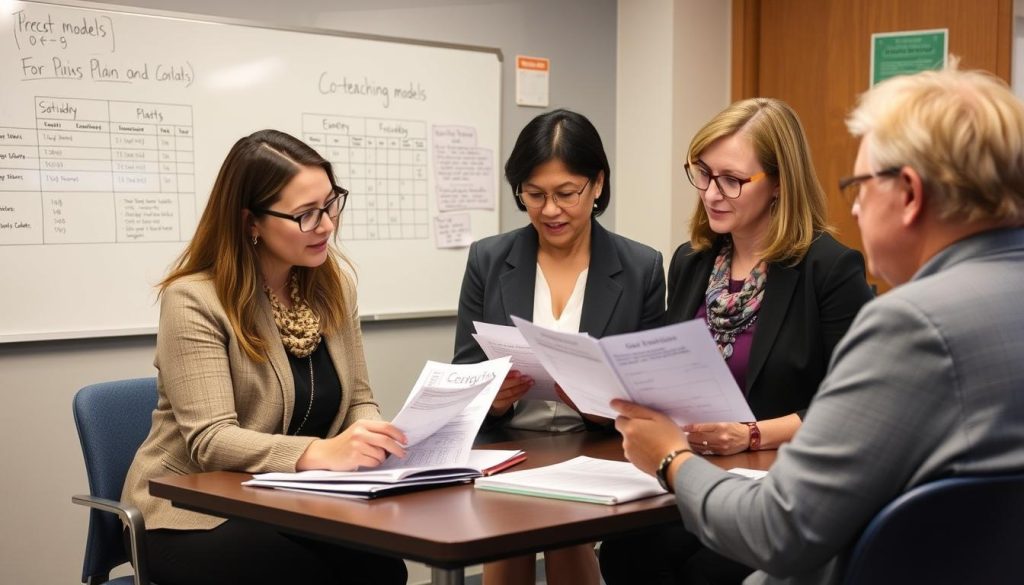
Essential Elements for Successful Co-Teaching
Shared Planning Time
Dedicated time for co-teachers to plan together is non-negotiable. Even 30 minutes per week can dramatically improve instructional alignment and student outcomes. During this time, teachers can analyze data, design differentiated instruction, and clarify their roles for upcoming lessons.
Clear Role Definition
Effective co-teachers establish clear expectations about their responsibilities for planning, instruction, classroom management, and assessment. This clarity prevents the special education teacher from being relegated to an assistant role and ensures both educators fully utilize their teacher skills.
Administrative Support
School leaders play a crucial role in creating conditions for successful co-teaching by providing adequate planning time, professional development, and a culture that values collaboration. Administrators should also consider teacher compatibility and content expertise when creating co-teaching pairs.
Overcoming Common Challenges
How do we find time for collaborative planning?
Creative scheduling is essential. Consider using common prep periods, early release days, or coverage arrangements to secure joint planning time. Even brief, focused planning sessions can be effective when supported by shared digital planning tools that allow asynchronous collaboration.
What if our teaching styles differ significantly?
Different teaching styles can actually enhance instruction when approached as complementary strengths rather than conflicts. Start by identifying shared values about student learning, then establish protocols for giving feedback and resolving differences. Focus on developing teacher skills that support flexibility and compromise.
How do we balance content expertise with specialized instruction?
The most effective co-teaching partnerships involve ongoing knowledge exchange. General educators share content expertise while special educators contribute specialized instructional strategies. Over time, both teachers develop increased capacity in both areas, enhancing their overall teacher skills and instructional effectiveness.
Implementing co-teaching effectively requires ongoing refinement and reflection. As professional development in collaborative teaching practices continues to evolve, educators have increasing access to research-based strategies that enhance their co-teaching effectiveness.
Pro Tip: Start small with co-teaching implementation. Begin with one unit or class period where both teachers feel confident, then gradually expand as your collaborative teacher skills develop. Document what works and continuously refine your approach based on student outcomes and partner feedback.
Why Co-Teaching Matters: Success Stories from the Classroom
The impact of co-teaching is best understood through real-world examples that demonstrate why co-teaching matters for student success. These scenarios illustrate how collaborative teaching transforms learning experiences and develops essential teacher skills.
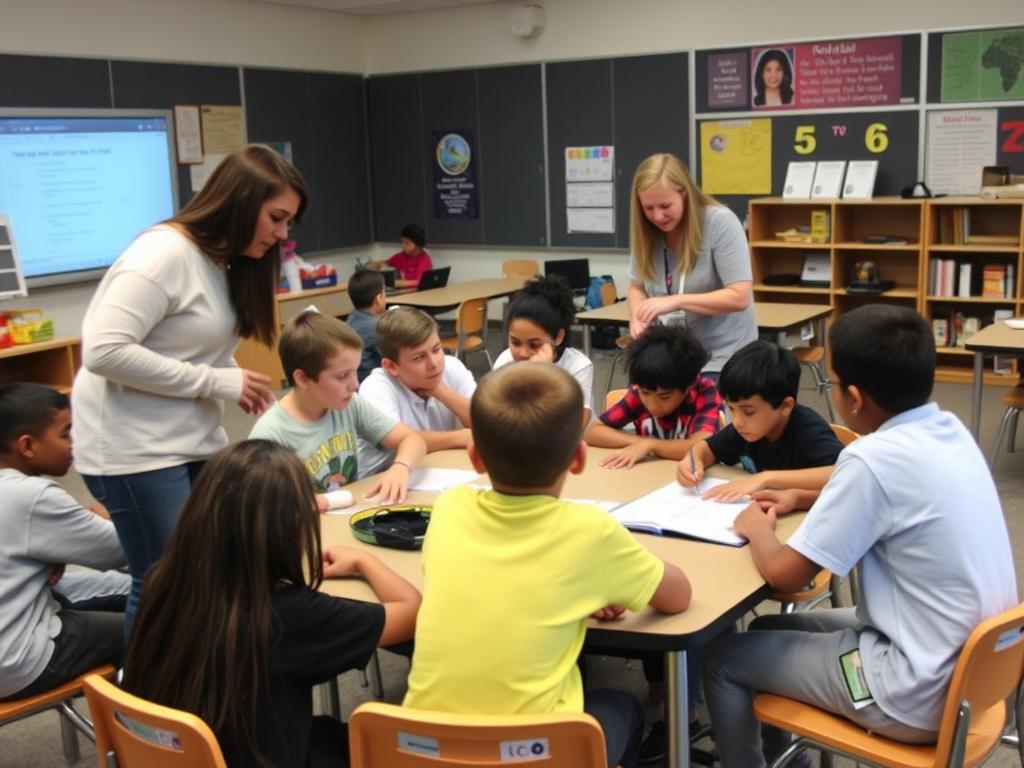
Elementary School: Station Teaching Success
In a third-grade classroom, Ms. Rivera (general education) and Mr. Chen (special education) implemented station teaching during their literacy block. They created four stations: guided reading with Ms. Rivera, writing workshop with Mr. Chen, independent reading, and technology-based skill practice. This approach allowed both teachers to work closely with small groups while targeting specific skills.
The results were remarkable: reading fluency scores improved by 35% compared to the previous year’s traditional model. Students with learning disabilities made consistent progress without being separated from peers, while advanced readers received appropriate challenges. Both teachers reported significant growth in their teacher skills, particularly in differentiation and formative assessment.
Middle School: Team Teaching Transformation
At Lakeside Middle School, science teacher Dr. Johnson and special educator Ms. Williams embraced team teaching for their 7th-grade curriculum. Rather than dividing responsibilities, they seamlessly alternated instructional roles throughout each lesson – one explaining scientific concepts while the other demonstrated applications, then switching to maintain engagement.
This approach transformed the classroom culture. Students no longer viewed Ms. Williams as “the special ed teacher” but recognized both educators as equally valuable resources. The teachers reported that their collaborative planning enhanced their teacher skills in questioning techniques, scientific discourse, and accessibility strategies.
High School: Alternative Teaching for Deeper Learning
In a 10th-grade history class, Mr. Garcia and Ms. Thompson used alternative teaching to support deeper analysis of primary sources. While Mr. Garcia led the main group through document analysis, Ms. Thompson worked with a smaller group of students who needed additional scaffolding or extension activities.
The flexible grouping was based on specific skills rather than labels, with group composition changing regularly. This approach allowed for targeted instruction while maintaining high expectations for all students. Both teachers developed enhanced teacher skills in historical thinking strategies and differentiated assessment techniques.
Ready to Transform Your Teaching?
Develop the specialized teacher skills needed for effective co-teaching with our professional development courses. Learn practical strategies that make a difference in your classroom.
Getting Started: Your Co-Teaching Journey
Ready to experience why co-teaching matters in your own classroom? Whether you’re just beginning or looking to enhance an existing partnership, these practical steps will help you develop the teacher skills needed for successful collaboration.
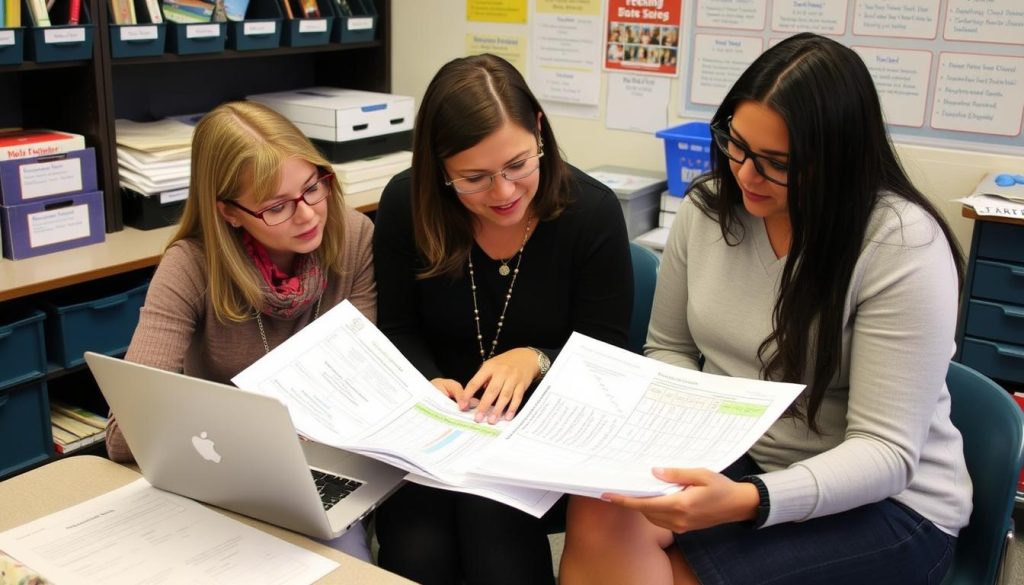
First Steps for New Co-Teachers
- Establish a shared vision. Before diving into lesson plans, discuss your educational philosophies, expectations, and goals for the co-teaching relationship. Finding common ground creates a foundation for collaboration.
- Clarify roles and responsibilities. Determine how you’ll share planning, instruction, assessment, classroom management, and parent communication. Be specific about who will handle what aspects of daily classroom life.
- Create communication protocols. Establish how and when you’ll communicate about student needs, lesson adjustments, and feedback. Regular check-ins prevent misunderstandings and strengthen your partnership.
- Start with familiar content. Begin co-teaching with curriculum areas where both teachers feel confident, then gradually expand to more challenging content as your collaborative teacher skills develop.
- Reflect and adjust regularly. Schedule time to discuss what’s working and what needs refinement. This ongoing reflection accelerates the development of your collaborative teacher skills.
Resources for Continued Growth
Developing effective co-teaching practices is an ongoing journey that requires continuous learning and refinement of teacher skills. These resources can support your professional growth:
- Professional Development: Specialized co-teaching courses provide structured learning opportunities to develop essential collaborative teacher skills.
- Peer Observation: Visiting other successful co-teaching classrooms provides valuable insights and practical strategies you can adapt.
- Collaborative Planning Tools: Digital platforms designed for co-teaching can streamline planning and documentation while enhancing communication.
- Professional Learning Communities: Connecting with other co-teaching pairs creates opportunities for shared problem-solving and innovation.
“Co-teaching isn’t about perfection; it’s about progress, reflection, and building something better together. The journey of developing collaborative teacher skills transforms not only our classrooms but also our professional practice.”
Remember that effective co-teaching develops over time as partners build trust, establish routines, and refine their collaborative approach. The investment in developing these specialized teacher skills yields significant returns in student engagement, achievement, and classroom community.
Conclusion: The Lasting Impact of Co-Teaching
Throughout this article, we’ve explored why co-teaching matters for students, educators, and school communities. This collaborative approach creates inclusive learning environments where diverse needs are met through shared expertise and intentional planning. When implemented effectively, co-teaching transforms classrooms into spaces where every student can thrive.
The benefits extend beyond academic outcomes to include enhanced teacher skills, professional satisfaction, and school culture. Co-teaching embodies the belief that collaboration produces better results than isolation – for both students and educators. As you continue your co-teaching journey, remember that each step toward more effective collaboration creates ripples of positive change throughout your classroom and school.
Whether you’re just beginning to explore co-teaching or looking to enhance an established partnership, investing in the teacher skills needed for effective collaboration will yield significant returns. The path to excellence for every student is paved with intentional collaboration, shared responsibility, and continuous growth.
Take Your Co-Teaching to the Next Level
Ready to develop the specialized teacher skills that make co-teaching truly effective? Our comprehensive professional development program provides practical strategies, collaborative planning tools, and ongoing support for your co-teaching journey.




